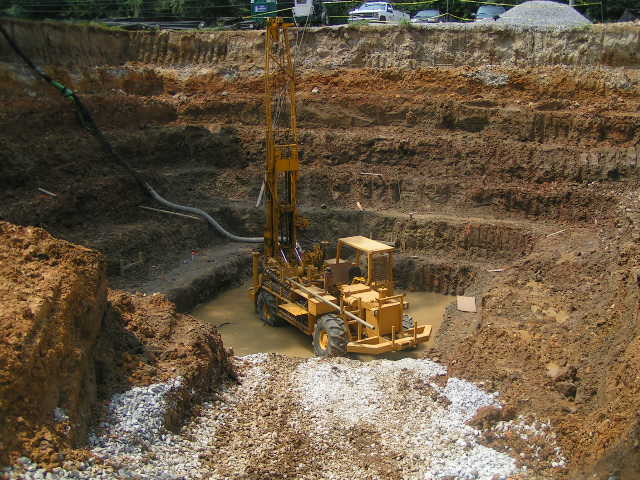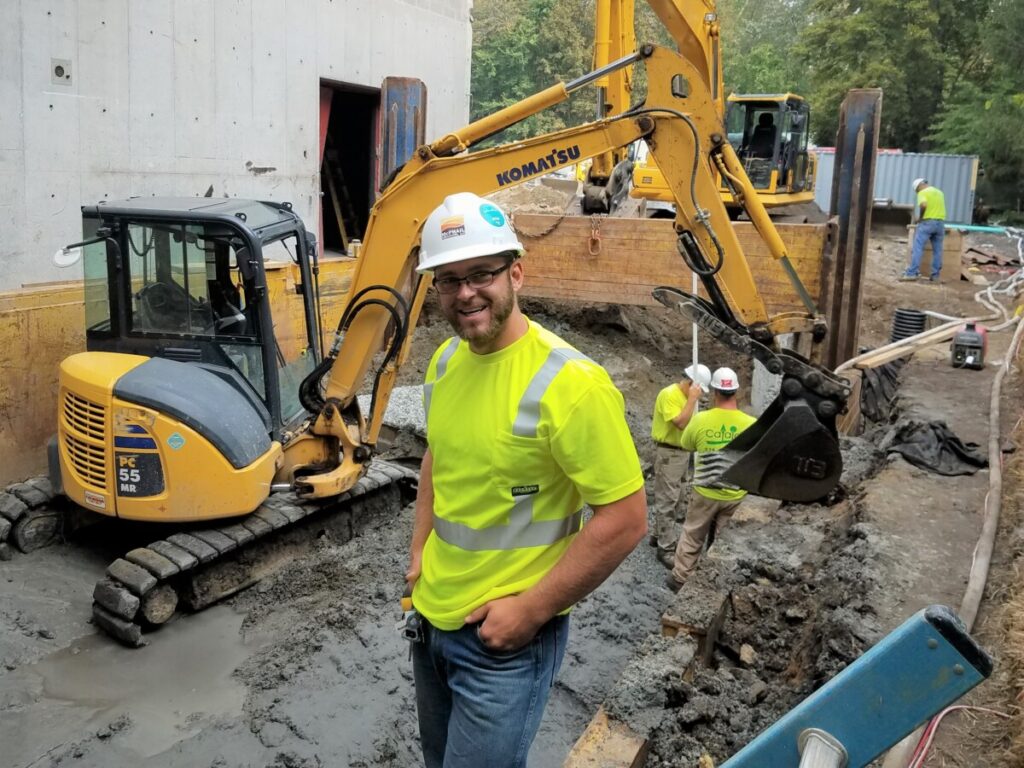Choosing the Right Consulting Engineer for Your Complex Design Task
Wiki Article
The Interdisciplinary Approaches in the Geotechnical Sector: Bridging the Gap Between Design, Geology, and Environmental Science for Optimal Project End Results
The assimilation of engineering, geology, and environmental scientific research within the geotechnical sector is not simply beneficial; it is critical for attaining optimum job end results. This interdisciplinary partnership fosters a detailed understanding of complicated website conditions, permitting ingenious remedies to arise. By checking out vital functions and effective study, we can discover the dynamic interaction that drives project success. Obstacles stay in effectively managing these multidisciplinary initiatives, increasing concerns concerning future fads and possible advancements. What approaches might emerge to promote this vital partnership and enhance the effectiveness of geotechnical techniques?Relevance of Interdisciplinary Partnership
The value of interdisciplinary cooperation in the geotechnical sector can not be overstated. Effective geotechnical tasks call for the integration of diverse proficiency from numerous areas, consisting of design, geology, and ecological scientific research. This collaboration guarantees that all aspects of a project are thought about, bring about comprehensive services that deal with complex difficulties.Interdisciplinary cooperation cultivates technology by making it possible for experts to share insights and methods that may not be obvious when working in seclusion (geo tech engineer). By leveraging the strengths of numerous self-controls, groups can determine potential threats, enhance design processes, and improve the sustainability of geotechnical tasks. Additionally, such collaboration advertises an all natural understanding of site-specific problems, which is important for accurate evaluation and decision-making.
The complexity of geotechnical jobs requires a worked with strategy to problem-solving. Eventually, interdisciplinary partnership is necessary for progressing finest techniques and achieving quality in the geotechnical sector.
Key Functions of Each Self-control
Partnership among different disciplines is not just helpful; it is essential for the effective implementation of geotechnical jobs. Each technique-- design, geology, and environmental science-- plays a distinct yet interconnected function that adds to forecast effectiveness and sustainability.Geotechnical engineers are largely responsible for designing structures and making certain architectural integrity. They evaluate soil and rock buildings to analyze load-bearing abilities, providing important information for secure construction methods. Their experience makes it possible for the formula of innovative options to intricate difficulties.

Ecological researchers examine the possible effects of building on communities and water resources. They conduct environmental analyses and establish mitigation strategies to minimize unfavorable results. By incorporating ecological factors to consider, they make certain conformity with guidelines and promote sustainability throughout the task lifecycle.
Study of Effective Integration
Effective combination of geotechnical disciplines can be exhibited via different case researches that highlight the efficiency of teamwork in dealing with intricate engineering obstacles. One significant example is the construction of the Hong Kong-- Zhuhai-- Macau Bridge, where a joint strategy involving geotechnical design, geology, and ecological scientific research was important. Designers and geologists functioned in unison to evaluate the seabed problems and optimize the foundation style, making certain stability and reducing ecological effect.An additional impactful case is the enhancement of incline stability in the San Francisco Bay Location, where an interdisciplinary group incorporated geotechnical evaluation with environmental assessments. By integrating geological studies and hydrological studies, the group efficiently determined possible landslide risks and carried out reliable mitigation measures, boosting safety and sustainability.
Furthermore, the redevelopment of Brownfield websites frequently calls for a multidisciplinary method. In one situation in Chicago, cooperation amongst geotechnical designers, ecological scientists, and metropolitan coordinators led to the effective removal of infected dirt, permitting the safe change of the site into an area park. These study highlight that interdisciplinary cooperation not only addresses technological challenges yet additionally cultivates innovative solutions that benefit both tasks and areas.
Challenges in Multidisciplinary Projects

In addition, coordinating timetables and operations among various groups can be problematic, especially when each self-control has distinct task milestones and deliverables. This misalignment can result in delays and enhanced costs. The challenge of source allotment additionally looms huge; guaranteeing that specialized know-how is offered at critical junctures requires cautious planning and foresight.
Finally, regulative conformity positions an additional considerable obstacle. Each technique might deal with various regulatory structures, and lining up these demands to fulfill project goals can be complex and taxing. Dealing with these difficulties demands strong management and efficient interaction strategies to promote cooperation and guarantee that multidisciplinary groups function cohesively towards shared goals.
Future Trends in Geotechnical Practices
As the geotechnical market advances, emerging fads are reshaping practices to attend to the obstacles dealt with in multidisciplinary tasks - consulting engineer. One significant trend is the boosted integration of sophisticated modern technologies, such as expert system and maker understanding, into geotechnical evaluation and layout. These modern technologies boost anticipating modeling and risk evaluation, allowing designers to make even more enlightened choices throughout the project lifecycle
Furthermore, the adoption of digital twins and real-time tracking systems is ending up being a lot more widespread. These devices promote recurring assessment of dirt problems and architectural performance, allowing for timely interventions when issues arise.
Final Thought
In conclusion, the integration of design, geology, and environmental science is vital for achieving ideal outcomes in the geotechnical sector. Effective case studies highlight the benefits of this approach, while acknowledging the obstacles dealt with in multidisciplinary jobs.The combination of design, geology, and ecological science within the geotechnical sector is not merely useful; it is important for attaining optimum project outcomes. Effective geotechnical projects call for the integration of diverse expertise from various fields, including design, geology, and ecological scientific research.Browsing the intricacies of multidisciplinary jobs in the geotechnical sector offers numerous considerable challenges.As the geotechnical industry evolves, emerging fads are improving techniques to resolve the challenges dealt with in multidisciplinary tasks. Geotechnical geotechnical engineers engineers are increasingly collaborating with ecological researchers to ensure that projects straighten with sustainability goals and conform with governing needs.
Report this wiki page